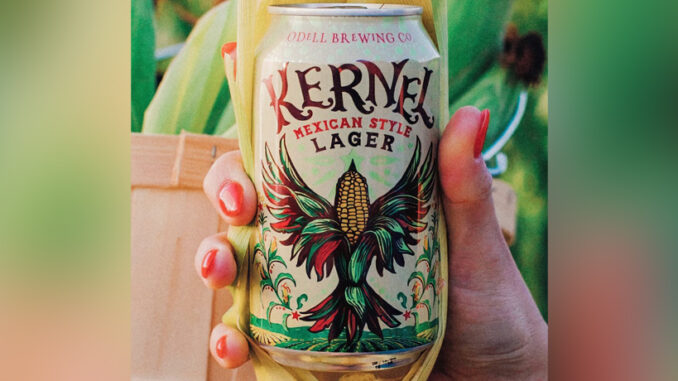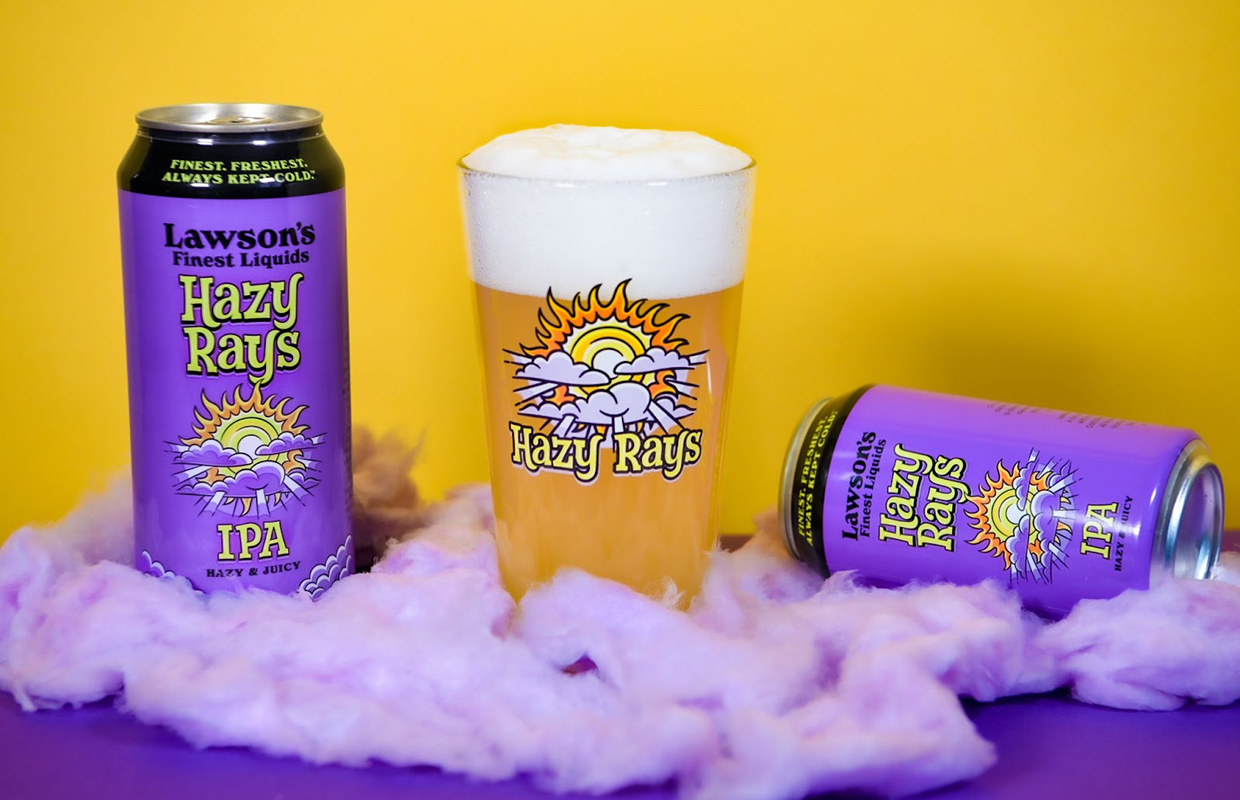
When Odell Brewing decided to elevate its long-running R&D Mexican Lager project into a full-scale, year-round release, the choice of corn and the way that corn was processed became a defining business decision rather than a mere recipe tweak. The result is Kernel, a Lager built on non-GMO malted corn. It formed a case study in how ingredient innovation can streamline production, differentiate a product in a crowded segment while building a compelling story for both distributors and drinkers.
Root Shoot Malting’s involvement with the process began well before the final grist was chosen. While many breweries often rely on raw, flaked, or steam-treated corn, malted corn is far less common in the US largely because few maltsters are willing to dedicate the time and facility adjustments required to do it well. As Root Shoot co-founder Todd Olander explains, malted corn behaves differently from barley during the malting process.
“It’s basically a starch bomb… a lot different texture… and it takes a full 24 hours longer than barley,” he said in a call with media members during a tasting of both the beer and the malted corn, which really help accentuate the drinking experience. “Larger malt houses push grain as hard as they can: five days start to finish. Corn throws off that schedule.”
Olander added that both flaked and raw corn provide a starch package that is entirely accessible by single-infusion mash regimens, and both will contribute to a little bit of stickiness in the mash. Malted corn, unlike flaked, has diastatic power.
“Brewers and distillers will not be entirely reliant upon the DP package in your base malt,” he told Brewer in a follow-up email. “But for most brewers, their grist ratios of corn will be sufficiently low that the added DP in malted corn versus flaked corn is not likely to impact total conversion, or mash rest times.
“Interestingly, the corn kernel’s exterior is entirely removed during the flaking process, where our malted corn remains in kernel form until milling prior to mashing in. The result is that malted corn will make for easier lautering given the added rough matter containing the kernel. The interior is highly friable and will ‘pop’ on the chew or when milled — mind your mill gap.”
That additional time investment, plus the need to segregate grain to avoid contamination, has kept most malt facilities from touching corn. But Root Shoot malts it intentionally and selectively, primarily for brewers looking for a functional and flavor-forward alternative to traditional cereal mash techniques. Skipping a cereal mash in the brewhouse can carry immediate implications. Malted corn allows a brewer to fully access starches at standard mash temperatures, eliminating the extra equipment, time, and labor normally associated with gelatinizing raw corn.
“It just gives brewers more in their toolbox without having to kind of do a special type of mashing,” Olander said.
Odell’s path to Kernel began at Sloan’s Lake, the R&D brewhouse, where Head Brewer Marni Wahlquist iterated through dozens of versions under the name Dante. The team explored every form of corn available: raw, flaked, steam-processed, and finally malted corn from Root Shoot.
According to Odell COO Brendan McGivney, the malted corn was the turning point for many reasons:
- It delivered the delicate, complex sweet-corn character they wanted.
- It eliminated the need to add wheat for body, which is a requirement when raw corn was used.
- It avoided the astringency they noticed with raw grain.
- It avoided the flavor dilution they experienced with flaked corn.
While the Root Shoot malted corn makes up only about 10% of the final grist, McGivney says it provides exactly the right kind of impact:
“We aren’t looking for a significant amount of extract,” he said. “The malted corn consistently contributes a noticeable and complementary corn flavor… without adding complexity to the brew process.”
Root Shoot’s malsters saw Odell’s trial process up close.
“They used raw corn, flake corn, steam corn… and they just didn’t like it as much as the malted corn,” explained Root Shoot Head Maltster Mike Myers. “We have just a little part of malted corn in this beer, and it really makes it unique and stand out.”
Any brewery considering malted corn will immediately ask whether skipping a cereal mash offsets the higher ingredient cost. Kernel’s development suggests it can and Olander added that Root Shoot’s malted corn is priced right at or near the price of most flaked corn.
“When we talk to brewers using our malted corn, they’ve often cited mash performance, ease of use, price comparability and flavor,” he said. “What’s more, our malted corn is a non-GMO corn. Most flaked corn suppliers rely on commodity corn, which is genetically modified.”
Odell didn’t adopt malted corn to improve extract yield, in fact it was quite the opposite. They pursued it because the sensory impact was superior and it streamlined brewhouse workflow. For a year-round package brand, that combination carries weight as any reduced complexity in process translates into smoother production scaling, fewer points of failure, and increased consistency.
At scale, the value proposition shifts from saving time on one brew day to preventing friction across hundreds of brew days per year.
Corn is traditionally associated with thinning a beer, and for many that connection is enough to avoid it in styles where foam stability matters. Yet, Kernel didn’t present those issues.
READ MORE: How a Visit to a Farm Can Turn Your Staff Into Better Beer Storytellers
Myers noted that corn typically has a negative effect on head retention due to low protein levels. Yet Odell reported the opposite: the beer held foam better than expected and avoided the thinness often associated with high-corn Lagers. Their strategy likely included adjusting base malt selection upward in protein, but the final result defied expectations enough that the Root Shoot team was “surprised at it really not affecting the head retention.”
So what began as Dante at the Sloan’s Lake pilot brewhouse became Kernel once Odell chose to scale the recipe. The rebranding aligned the beer more closely with its defining ingredient, while also establishing a recognizable name for grocery and off-premise shelves, where Mexican Lagers remain one of craft’s fastest-growing segments right now.
The reception so far has justified the development time.
“Very positive feedback,” McGivney notes. Dante was always a top seller at the R&D taproom, and Kernel’s launch has carried that momentum into the broader market.
Odell has leaned heavily into the ingredient story, making the Root Shoot partnership a key part of the brand’s identity. In fact, during the release, the Root Shoot maltsters were onsite engaging with customers, which gave a rare spotlight into an ingredient that sometimes gets overshadowed by others like hops or yeast.
Kernel may prove that small inclusions can yield big returns — whether those returns come in flavor, efficiency, or the narrative that connects a beer to drinkers and distributors. And Olander believes that malted corn can stand in for, or alongside, flaked corn in basically all applications.
“We’ve tried malted corn Mexican Lager, American Lager, Cream Ale, IPA, West Coast Pilsner, (young) Bourbon, and more,” he said. “In nearly every case, the feedback that we get from our brewery/distillery partners is that they’re extremely happy with the quality and complexity of the product that they made with malted corn.”







Be the first to comment